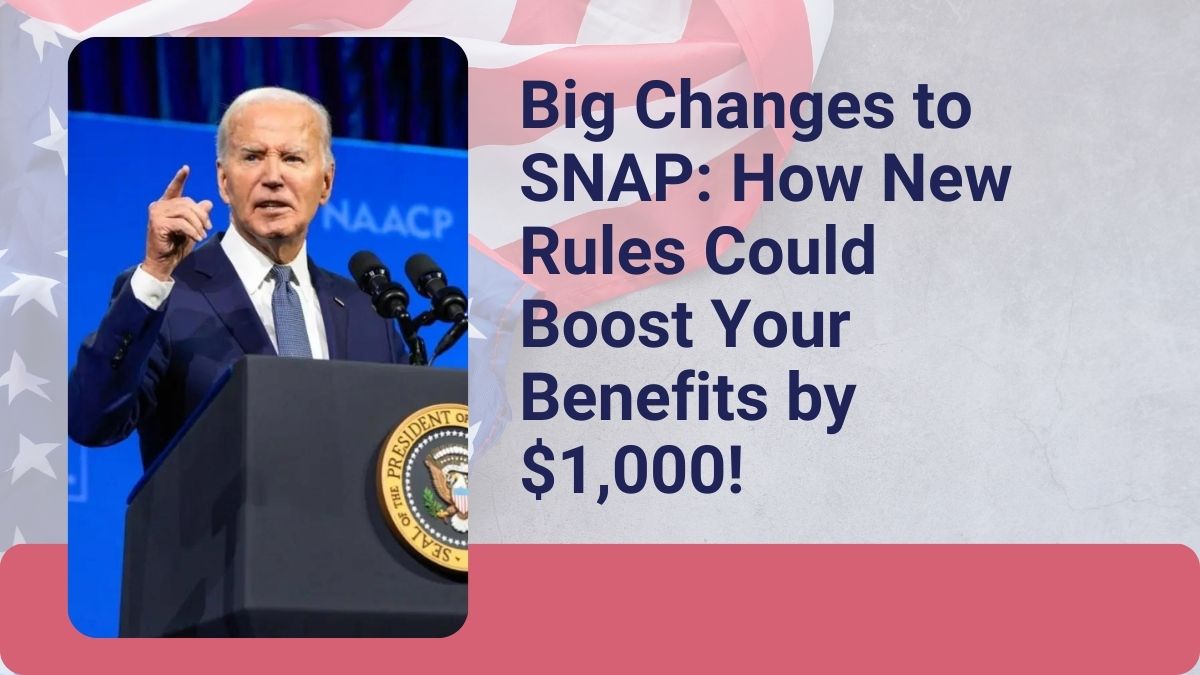As inflation continues to affect millions of households across the U.S., significant changes are being introduced to the Supplemental Nutrition Assistance Program (SNAP) in 2024. These changes will affect the amount of aid provided, eligibility criteria, and other factors.
The updates, driven by economic conditions and the need to adjust benefits to match rising living costs, could mean up to $1,000 in additional benefits for some households. Let’s dive into what you need to know about these changes and how you can make the most of them.
How SNAP Benefits Are Adjusted
SNAP benefits are adjusted annually based on the Cost of Living Adjustment (COLA), which takes into account the average economic data from the third quarter of the year.
The USDA uses the Thrifty Food Plan (TFP) to ensure that SNAP recipients can afford a nutritious diet, even as food prices increase.
These annual adjustments are crucial because they ensure the benefits reflect the rising costs of goods, preserving purchasing power for low-income households.
For 2024, these adjustments will result in an increase in the maximum monthly allotments, income eligibility thresholds, and standard deductions, giving recipients a financial boost to better manage rising food prices.
Key Updates in SNAP for 2024
1. Maximum Monthly Allotments
Starting from October 1, 2024, the USDA has adjusted the maximum SNAP allotments, which represent the maximum amount of financial aid households can receive each month. For example:
- 1-person household: $291
- 4-person household: $973
- 6-person household: $1,386
These amounts are designed to cover basic food needs, and the adjustments help households cope with inflation.
2. Income Eligibility Changes
SNAP eligibility is based on household income. For 2024, the income eligibility threshold has been adjusted to reflect changes in the economy:
- 1-person household: Income limit of $1,473/month
- 4-person household: Income limit of $3,007/month
This means more households could qualify for SNAP, as the income limits have increased to account for higher living costs.
3. Standard Deduction Increase
The standard deduction (the amount subtracted from your income to calculate your benefits) will also increase in 2024:
- Household size of 1-3: $198/month
- Household size of 4: $219/month
These deductions play a crucial role in determining the level of benefits households receive, and the increase means that more people will qualify for a higher benefit amount.
How Inflation Impacts SNAP Benefits
Inflation reduces the purchasing power of money, meaning that households can afford less food with the same amount of benefits as prices rise. To counter this, SNAP benefits are adjusted yearly to align with the rising cost of living. The 2024 changes reflect this approach, with increased benefits helping households to keep up with food costs, ensuring that recipients can still maintain a balanced diet.
Boost in Benefits: Up to $1,000!
For some households, the new SNAP rules could result in up to $1,000 in additional benefits over the course of the year. This boost comes from several sources:
- Increased monthly allotments due to the COLA adjustment.
- Higher income eligibility limits, allowing more families to qualify for benefits or receive increased amounts.
- Adjustments to deductions, ensuring that more of your income goes toward benefits.
By combining these factors, many families can expect a noticeable increase in their total annual benefits.
| Household Size | Maximum Monthly Allotment | Income Eligibility (Monthly) | Standard Deduction |
|---|---|---|---|
| 1 | $291 | $1,473 | $198 |
| 2 | $535 | $1,984 | $198 |
| 3 | $766 | $2,495 | $198 |
| 4 | $973 | $3,007 | $219 |
| 5 | $1,155 | $3,518 | $219 |
| 6 | $1,386 | $4,029 | $219 |
How to Maximize Your SNAP Benefits
- Track the Changes: Stay informed about the new SNAP updates through your state’s SNAP office or the USDA website.
- Submit Timely Applications: Apply for benefits early to ensure that you receive your benefits on time, especially with new eligibility thresholds.
- Utilize Additional Support: Many states offer complementary programs, such as the Summer EBT for children or Farmers Market incentives, which can increase your food budget further.
Conclusion
The 2024 changes to the SNAP program are designed to help low-income households cope with rising food prices by providing up to $1,000 in additional benefits over the year. With increases in the maximum monthly allotment, income eligibility thresholds, and standard deductions, families can expect significant relief to maintain their nutritional needs.
Staying informed about these changes and applying early can help you maximize your benefits and ensure food security in uncertain economic times.
FAQs
The changes will take effect on October 1, 2024, at the start of the new fiscal year.
A family of four can expect a maximum allotment of $973 per month, depending on income and other factors.
Households meeting the income eligibility threshold and other criteria, such as U.S. residency, qualify. The income limit for a family of four is $3,007 per month.
Yes, there are work requirements for able-bodied adults aged 18 to 52, but exemptions exist for pregnant individuals, the elderly, and those with disabilities.
SNAP benefits are reviewed annually, and adjustments depend on the state of the economy and inflation. The USDA will likely adjust them again based on 2024’s economic data.
References
- SNAP Benefits Increase as Eligibility Changes, ABC News
- SNAP FY 2024 Cost-of-Living Adjustments, USDA(USDA Food and Nutrition Service)
- Big Changes in SNAP Benefits: What You Need to Know for 2024, Home Atlas(Home at Last HS)
